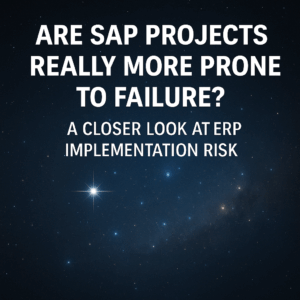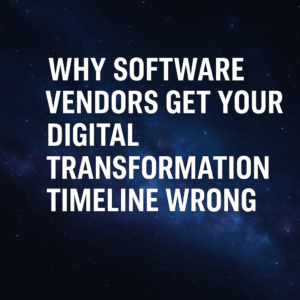When defining a digital strategy for organizational transformation, it is beneficial to examine examples of how one might define such a strategy. However, the main focus of this discussion is to explore the necessary steps involved in developing a digital strategy for your organization.
![Learning From 3 Digital Transformation Strategies [Detailed Examples and Case Studies] 1 YouTube player](https://i.ytimg.com/vi/YmwftR4PQFM/maxresdefault.jpg)
I will summarize three key areas: business process management, organizational change, and technology. The technology aspect encompasses not only enterprise applications but also solution architecture, business intelligence, and analytics. I will discuss these three areas and provide a few examples based on real scenarios with some of our current clients. While I won’t mention the organizations by name, I will describe their situations and the strategic considerations and variables involved.
Table of Contents
ToggleFortune 500 Company
Let’s proceed with our first example. In this particular case, we will examine a Fortune 100 global company. This organization is not only significant in size, complexity, and diversification but has also expanded through mergers and acquisitions (M&A). As part of their acquisition strategy, they are now seeking ways to standardize and scale their operations.
![Learning From 3 Digital Transformation Strategies [Detailed Examples and Case Studies] 2 YouTube player](https://i.ytimg.com/vi/ByHk2MdKEDY/maxresdefault.jpg)
These high-level strategic imperatives are crucial to understanding the situation at a global Fortune 100 level. The organization’s growth through acquisitions necessitates the consolidation and standardization of their diverse operations. However, it is important to note that the strategic considerations for this scenario differ from other situations in the marketplace. Specifically, the operational strategy, or business process strategy, will primarily focus on standardizing business processes.
In this context, we will focus on standardizing our processes, addressing disparate and fragmented business processes. As part of our strategy, we may consider transitioning to a shared service model. This entails consolidating multiple IT groups, HR departments, or accounting departments into unified functions. Such consolidation would help reduce costs, promote consistency across the organization, and facilitate scalability. The adoption of a shared service model is common in scenarios like this. Additionally, many clients in similar situations aim for a unified business model. Their objective is to act as a single business entity, not merely to drive cost reductions but to foster cohesion. Rather than operating as multiple separate businesses resulting from acquisitions, they aspire to function as a cohesive global company with standardized business processes and shared service models.
Moving on to the people strategy, it needs to align with the strategies we have defined thus far. In this particular scenario, the people strategy will involve changes in roles and responsibilities, given the transition to the shared service model. As we consolidate functions and eliminate multiple HR or accounting departments, significant adjustments to roles and responsibilities will occur. This may involve workforce restructuring and potential job reductions.
Not many companies include workforce reductions as part of their transformation efforts, but some do. This aspect is particularly sensitive and can lead to turmoil, chaos, and resistance to change. People naturally do not want to lose their jobs or witness their colleagues facing job loss, so there may be resistance to change at a higher level due to these concerns. Overall, effective change management is crucial for all the scenarios discussed. While I won’t consider it a unique people strategy for this particular situation, it’s worth noting that change management will play a vital role. However, one standalone factor to highlight is the change impact in this scenario. The organizational impacts and changes will be significant and more severe compared to other digital transformations. Therefore, it is essential to fully understand the change impact in order to deploy a change strategy that addresses these impacts and allows the organization to move forward successfully.
![Learning From 3 Digital Transformation Strategies [Detailed Examples and Case Studies] 3 YouTube player](https://i.ytimg.com/vi/gzKceOTexTU/maxresdefault.jpg)
Having defined the high-level operational and organizational strategic variables, we can now focus on the technology strategies that will best support this scenario. In this case, implementing a single, fully integrated Tier 1 ERP system may be highly beneficial. Such a system would facilitate process standardization, provide scalability, support the shared service model, and enable better organizational scaling. Primarily, Tier 1 ERP systems will be considered, which are the major ERP providers catering to large companies such as SAP, Oracle, and potentially Microsoft or Workday (although the latter two are technically Tier 2 systems but are growing into Tier 1 capabilities). Rather than adopting a best-of-breed approach, the focus here is on finding a close-to-single ERP system, with any necessary regulatory or legacy systems being integrated as bolt-ons. Additionally, a strong emphasis on a cloud strategy may be present, as cloud-based systems align well with the need for standardization, scalability, and consistent business processes.
This example illustrates how different variables can be defined to support the desired direction of a digital transformation. Now, let’s shift gears and explore a different case study. This time, we will focus on a mid-sized, high-growth organization.
Mid Sized, High Growth Company
Next, is a mid-sized company experiencing high growth, emphasizing flexibility and agility. It is an entrepreneurial organization dealing with significant growth in the mid-market. It may have received private equity funding or simply hit its stride and experienced substantial growth. For this mid-sized company, flexibility is paramount. They are not seeking standardization, shared service models, or common business processes. Instead, they strategically value the ability to move quickly and be nimble. What does this mean for the operational strategy? It means having flexible business processes that can adapt to changing market conditions. If the company is global or plans to expand geographically, the processes may vary based on location. The focus is on building adaptable processes rather than standardized, repeatable, and consistent ones across the organization. The goal is to intentionally allow processes to differ or evolve as the business grows.
Shifting to the people strategy, the focus is on deploying change management and an organizational structure that aligns with the company’s needs. Shared services, which may be crucial for a large global company, take a back seat in a rapidly changing and growing mid-sized company. The emphasis is on building a workforce that can quickly respond to business processes and designing an organization that prioritizes flexibility. Instead of clear divisions of labor, the organization fosters a “jack of all trades” mentality, where employees are versatile and capable of handling multiple functions to meet varying customer demands in the marketplace. Resource constraints are also a consideration in this type of organization. Limited resources mean managing a digital transformation with fewer available resources, which can lead to a slower implementation pace. Consequently, the overall digital strategy may have a longer-term horizon due to resource limitations.
Now, let’s examine the technology strategy. This differs from the first example of the global Fortune 500 company that aims to standardize operations with a tier one ERP system. In this case, the technology strategy favors a best-of-breed approach. The intention is to intentionally consider multiple systems as it enables faster technology deployment. The focus here is on being flexible, nimble, and agile, and the goal is to expedite technology implementation and increase the pace of operations. We can refer to this approach as accelerated tech deployments. Additionally, it may involve exploring alternative technologies beyond best-of-breed solutions, such as software platforms.
It’s not just about the applications we deploy; equally important is the platform we choose. This platform should allow us to develop new capabilities on top of off-the-shelf technology. For instance, using a software platform like Salesforce’s Force.com or Microsoft’s D365 platform enables us to build third-party applications, giving us the ability to develop our own capabilities and competitive advantages while maintaining flexibility with the deployed technology. These strategic variables significantly differ from other examples involving larger or smaller companies. To provide further insight, let’s move on to a third example—a smaller organization and its digital strategy focused on growth.
Smaller Organization Focused on Growth
Now, let’s consider a smaller organization with fewer than 100 employees and revenue below $100 million. Their goal is to scale and become a mid-sized player in the market. Currently, they may be using an outdated QuickBooks system or limited technology. As they embark on adopting robust off-the-shelf enterprise technologies for the first time, their operational strategy might be less mature compared to the previous examples.
Here, the focus is not on standardizing or creating flexible processes but rather on establishing processes from scratch. Smaller organizations often react and adjust quickly without well-documented or defined processes. Therefore, the emphasis is on process definition and documentation. Additionally, revenue-based processes, especially sales processes, take center stage as they drive top-line growth and fuel the organization’s expansion towards the mid-market.
Regarding the people strategy, emphasis is placed on onboarding and development processes. With scaling comes the need to hire more people, necessitating robust HR processes for employee onboarding and training. Since this organization may have limited experience with large system deployments, training and education on digital transformation best practices become vital to ensure employees understand the requirements for project success.
In terms of technology strategy, the focus may not be on implementing a large ERP system or even a best-of-breed solution. Instead, it centers around targeted technologies that fuel growth. This includes CRM technology to support revenue growth and HR or HCM technology to facilitate organizational scaling and support the growing workforce. These become the organization’s key priorities, while other areas such as financial and accounting systems, manufacturing processes, inventory management, and business intelligence may receive less emphasis.
By considering these factors, this smaller organization can formulate a comprehensive digital strategy that aligns with its goals and constraints.
Commonalities in These Examples
There are three distinct scenarios and situations commonly observed with our clients. Some may resonate specifically with you, while others may only partially align. The purpose is to help you understand and define your organization’s high-level strategic goals and objectives. By doing so, you can develop a digital strategy that enables these defined business processes and strategies.
Referring back to our digital strategy framework, which is explained in detail in my digital strategy methodology Deep Dive video, we can see that there is more specific information to be addressed. However, the crucial aspect is that all these considerations are approached within the context of our overarching business and organizational strategy. It is essential to identify a digital strategy that aligns with your organization’s unique needs. There is no one-size-fits-all solution or silver bullet. Instead, you must define a digital strategy that best suits your organizational objectives.
I would enjoy brainstorming ideas with you if you are looking to strategize an upcoming transformation or are looking at selecting an ERP system, so please feel free to contact me at eric.kimberling@thirdstage-consulting.com. I am happy to be a sounding board as you continue your digital transformation journey.





